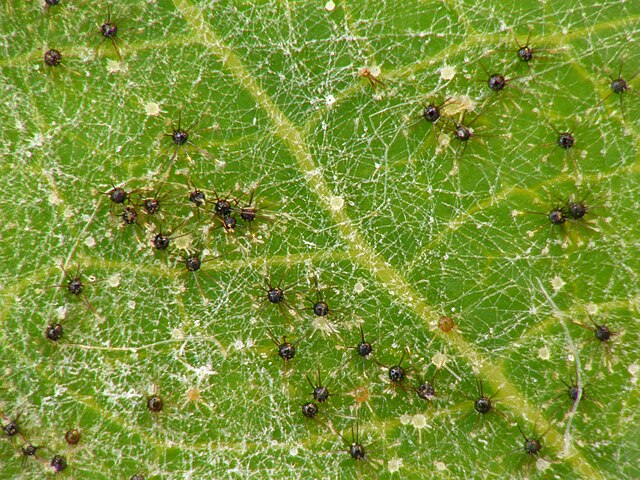Powdery mildew is a fungal disease that affects a wide range of plants. Powdery mildew diseases are caused by many different species of ascomycete fungi in the order Erysiphales. Powdery mildew is one of the easier plant diseases to identify, as the signs of the causal pathogen are quite distinctive. Infected plants display white powdery spots on the leaves and stems. This mycelial layer may quickly spread to cover all of the leaves. The lower leaves are the most affected, but the mildew can appear on any above-ground part of the plant. As the disease progresses, the spots get larger and denser as large numbers of asexual spores are formed, and the mildew may spread up and down the length of the plant.
Example of powdery mildew (right) along with Downy mildew on a grape leaf
Powdery mildew on a recently infected plant.
Powdery mildew growing on a leaf (magnified)
Powdery mildew growing on a leaf (high magnification)
Ascomycota is a phylum of the kingdom Fungi that, together with the Basidiomycota, forms the subkingdom Dikarya. Its members are commonly known as the sac fungi or ascomycetes. It is the largest phylum of Fungi, with over 64,000 species. The defining feature of this fungal group is the "ascus", a microscopic sexual structure in which nonmotile spores, called ascospores, are formed. However, some species of Ascomycota are asexual and thus do not form asci or ascospores. Familiar examples of sac fungi include morels, truffles, brewers' and bakers' yeast, dead man's fingers, and cup fungi. The fungal symbionts in the majority of lichens such as Cladonia belong to the Ascomycota.
Ascomycota
A member of the genus Ophiocordyceps which is parasitic on arthropods. Note the elongated stromata. Species unknown, perhaps Ophiocordyceps caloceroides.
The "candlesnuff fungus" in its asexual state, Xylaria hypoxylon
The ascocarp of a morel contains numerous apothecia.








